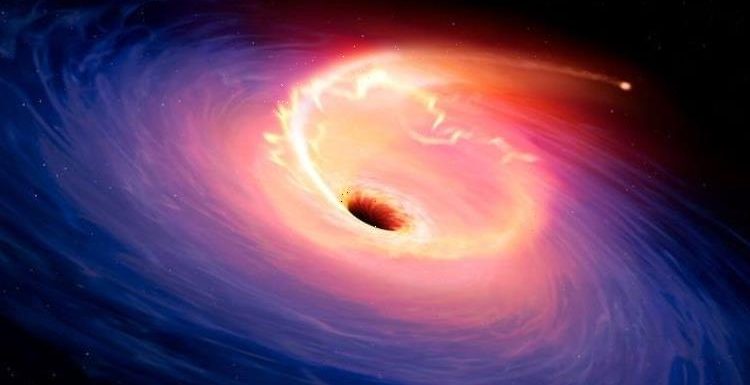
NGC 1850: Cluster of stars roughly 160 000 light-years away
We use your sign-up to provide content in ways you’ve consented to and to improve our understanding of you. This may include adverts from us and 3rd parties based on our understanding. You can unsubscribe at any time. More info
The terrifying discovery was made some 160,000 light-years away using the European Southern Observatory’s (ESO’s) Very Large Telescope (VLT). Although black holes cannot be seen by the naked eye – hence the term “black” – astronomers can observe the effect they have on the objects surrounding them. In this particular case, the team was investigating how black holes influence the motion of stars within close proximity.
They believe the technique can be used to reveal multitudes of otherwise hidden black holes lurking in the depths of space.
Lead investigator, Dr Sara Saracino of Liverpool John Moores University said, likened the process to combing through a crime scene using a large magnifying glass.
She said: “Similar to Sherlock Holmes tracking down a criminal kingpin by the strange movements of their ‘associates’, we are looking at every single star in this cluster with a proverbial magnifying glass trying to find some evidence of where the real power lies.”
The astronomers focused their attention on the NGC 1850 star cluster, which forms part of the Large Magellanic Cloud.


The LMC itself is a neighbouring galaxy to the Milky Way.
Their research was published earlier this month in the journal Monthly Notices of the Royal Astronomical Society.
In their paper, they described the discovery of a fairly young but colossal black hole they have dubbed NGC 1850 BH1.
The black hole is estimated to only be about 100 million-years-old but is at least 11.1 times as big as our Sun.
For comparison, the Sun is estimated to be about 4.6 billion-years-old and is about halfway through its expected lifespan.
Brian Cox discusses the 'disturbing' nature of black holes
The astronomers were able to pinpoint the black hole’s location because it appears to be devouring a neighbouring star weighing about 4.9 times as much as the Sun.
Astronomers refer to these systems as black hole binaries – systems where two black holes or a black hole and star are in close orbit of one another.
“Stellar mass” black holes have been previously detected in other galaxies by observing their X-ray signatures from swallowed matter or by picking up the gravitational shockwaves of two black holes colliding.
In this case, however, the researchers claim to have used a “dynamic” detection method for the very first time.


Stefan Dreizler, a team member based at the University of Göttingen in Germany, said: “The vast majority can only be unveiled dynamically.”
The discovery also marks the first time a black hole has been found in a young cluster of stars.
According to the team, comparing their find to older, more mature systems, may help scientists better understand how black holes grow.
The astronomers used data obtained by the Very Large Telescope in Chile’s Atacama Desert, and the Multi-Unit Spectroscopic Explorer (MUSE) instrument.
Dr Sebastian Kamann, at Liverpool’s Astrophysics Research Institute, said: “MUSE allowed us to observe very crowded areas, like the innermost regions of stellar clusters, analysing the light of every single star in the vicinity.
“The net result is information about thousands of stars in one shot, at least 10 times more than with any other instrument.”
The instruments allowed them to see spot a star whose motion seemed out of the ordinary.
They then confirmed the black hole’s mass using the Hubble Space Telescope and data from the University of Warsaw’s Optical Gravitational Lensing Experiment.
Source: Read Full Article